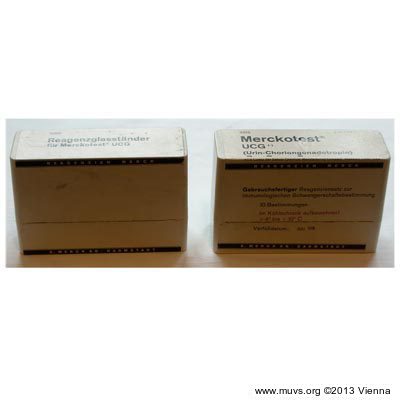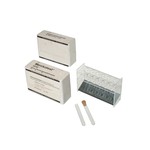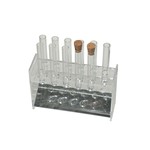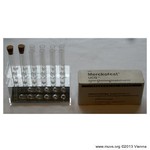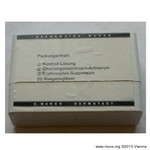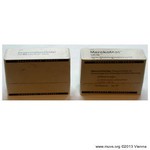Merckotest® UCG (Urine chorionic gonadotropin)
In one box are located 11 of an original 22 test tubes, 2 of which have a cork bung. The second box contains the test tube stand for the Merckotest®
For the haemagglutination inhibition test, one needs 1) antiserum, obtained through sensitizing rabbits to human chorionic gonadotropin (hCG), which acts as an antigen, (= anti-hCG serum), and 2) sheep erythrocytes that are coated with hCG.
The principle: if the urine of a pregnant woman (contains hCG) comes into contact with anti-hCG serum, then the latter is bound by the hCG in the urine. Now one adds hCG-coated sheep erythrocytes. Since the anti-hCG serum is already bound, the sheep erythrocytes cannot react with it; they sink to the bottom and form a sharply defined, clearly visible dark ring - the result is positive.
If the urine contains no hCG, then the hCG-coated sheep erythrocytes react with the anti-hCG serum (agglutination). As a result, the sheep erythrocytes stay in suspension, i.e., they don’t sink to the bottom, and no ring develops— the result is negative.
Source: W. Pschyrembel, Praktische Geburtshilfe (Practical Obstetrics), 1967
